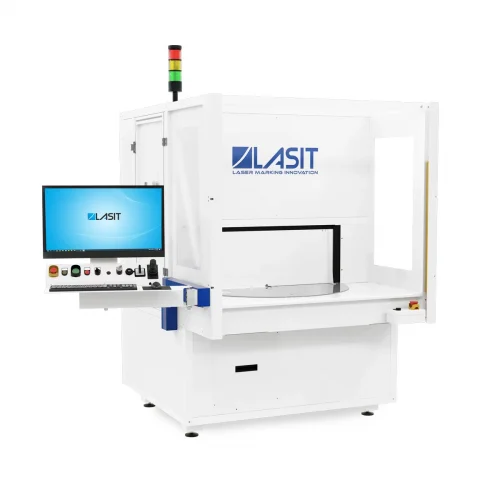Professional machines and systems for professional laser welding!



Laser welding is an innovative technology that revolutionizes the industry.
Laser welding is a material joining technique that uses the energy of the laser beam to melt the surfaces to be joined. The laser beam, precisely concentrated, allows you to obtain small welding spots, guaranteeing a clean and controlled weld.
Thanks to its high precision laser beam, it allows you to join materials efficiently and with high quality.
This methodology has significant advantages compared to other traditional welding techniques. With a wide range of industrial applications, laser welding offers high flexibility and versatility.
Let’s discover its operating principles, materials and applications, procedures and techniques, systems and equipment, safety and precautions, as well as future developments that characterize it.
Laser welding finds application in various industrial sectors, such as automotive, electronics, aerospace and many others. It is used for the production of mechanical components, electronic circuits, microwelding and much more. Its high accuracy and versatility make it an ideal choice for many specialized applications.
Laser welding is a process of joining materials that uses the energy of a focused laser beam. This beam, of high intensity and precision, is used to melt the surfaces to be welded. The laser energy is absorbed by the material, generating heat that causes the parts to be joined to melt and solidify.
Laser welding technology is based on several processes, including transmission welding, heat conduction welding and light conduction welding. Transmission welding occurs through the absorption of the laser by one of the materials to be welded, while thermal conduction welding uses the heat generated by the laser beam to melt both materials at the same time. Light conduction welding, on the other hand, uses a filler material which, heated by the laser, melts and forms a solid joint between the materials to be welded.
Knowledge of the operating principles of laser welding is essential to understand the applications, advantages and potential of this advanced technology. Laser welding offers great precision, speed and reliability in production processes, making it increasingly widespread in various industries.
Laser welding offers a wide range of possibilities thanks to the most suitable materials used. These materials must have certain characteristics to obtain optimal welding results. The most common materials for laser welding include stainless steel, aluminum and titanium. These materials are chosen for their thermal conductivity, mechanical resistance and adaptability to high temperatures.
Laser welding is widely used in the production of tools and moulds. Thanks to its precision and high welding speeds, it is possible to obtain high-quality joints that guarantee the durability and efficiency of the tools. Laser welding allows you to repair and strengthen damaged parts of tools, extending their useful life and reducing replacement costs.
Laser welding finds numerous applications in the industrial sector. It is widely used in the automotive industry for the production of bodywork, chassis and structural components. Furthermore, it finds use in the aerospace industry for welding critical components such as tanks and light structures. Other industrial applications include energy, electronics and medical device manufacturing.
Laser welding requires specific systems and equipment to guarantee a precise and high-quality result. Below, the main components and tools used in the welding process are presented.
In addition to these components, there may be other specific accessory equipment based on the needs and applications of laser welding. The correct selection and use of these systems and equipment are essential to achieve excellent welding results and meet safety regulations.
Laser welding continues to evolve with new technological innovations that improve the efficiency and quality of the process. Some of the main innovations include: – New types of high-power laser sources, which allow greater penetration and welding speed. – Advanced optical tracking systems, which allow precise welding even on complex shapes. – Real-time monitoring technologies, which allow you to check and correct any defects during the welding process. – Simulation and modeling tools, which facilitate advance design of the welding process and parameter optimization. – Automation and robotic systems, which integrate laser welding into automated production lines.

+39 800 821 577
sales@lasitlaser.com
Location
ITALY | Via Solferino 4, 80058
Torre Annunziata (NA) - Italy
POLAND | Ul. Fabryczna 34, 43-100
Tychy, Poland
SPAIN |
Calle Bari 55, 50197
Plataforma Logística Zaragoza
GERMANIA |
Im Stockäcker 7, 78194
Immendingen
REGNO UNITO |
Unit 6 Blythe Valley Innovation Centre
Central Boulevard
© 2024 LASIT Sistemi e Tecnologie Elettrottiche S.p.A. | P.Iva 02747991210 | C.F 01803670643 | Chi Siamo | Contattaci Privacy Policy.